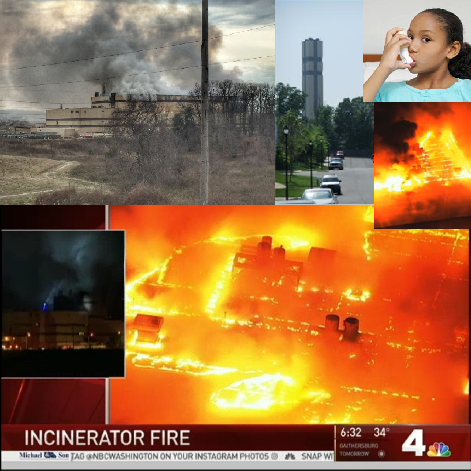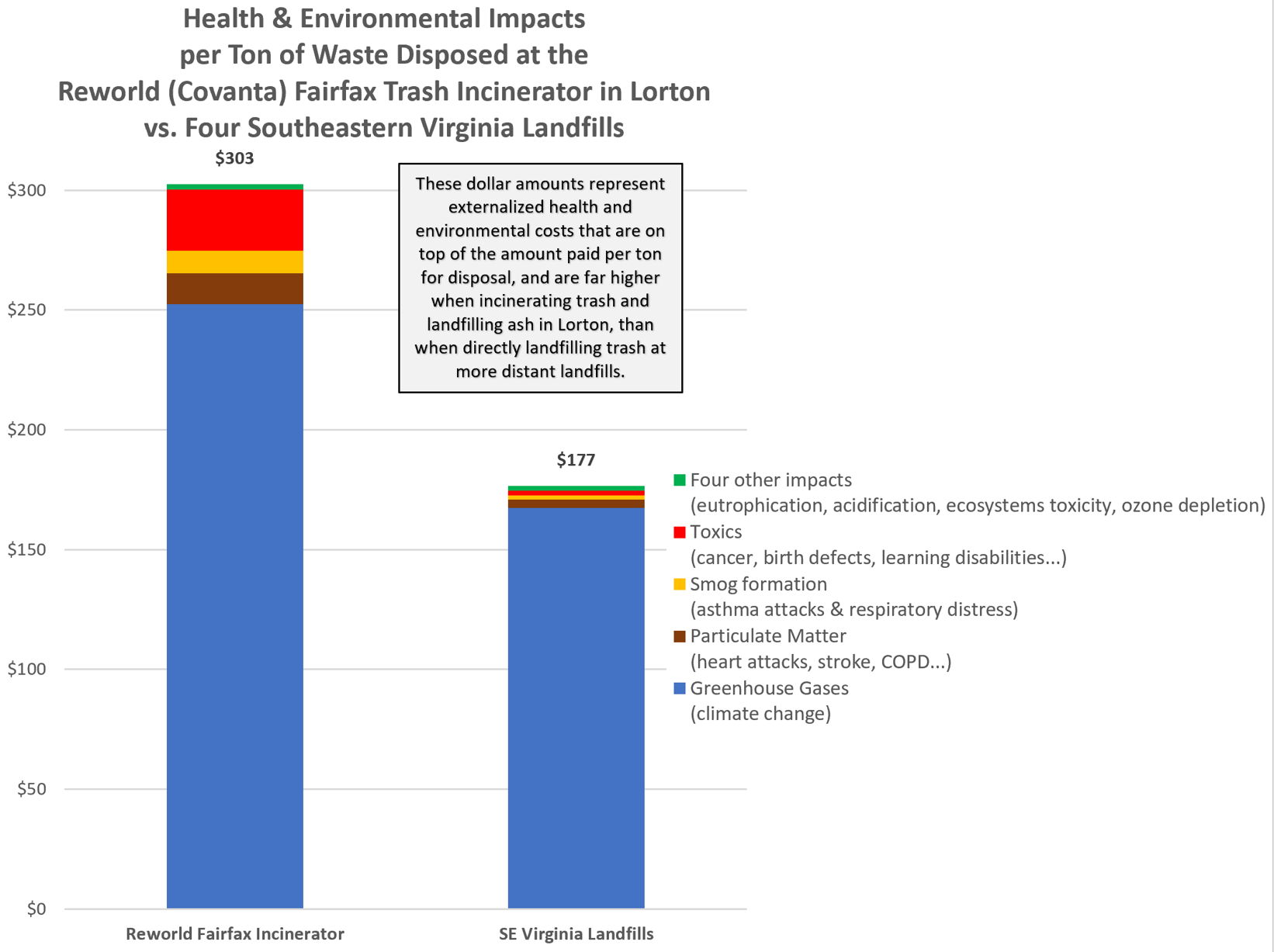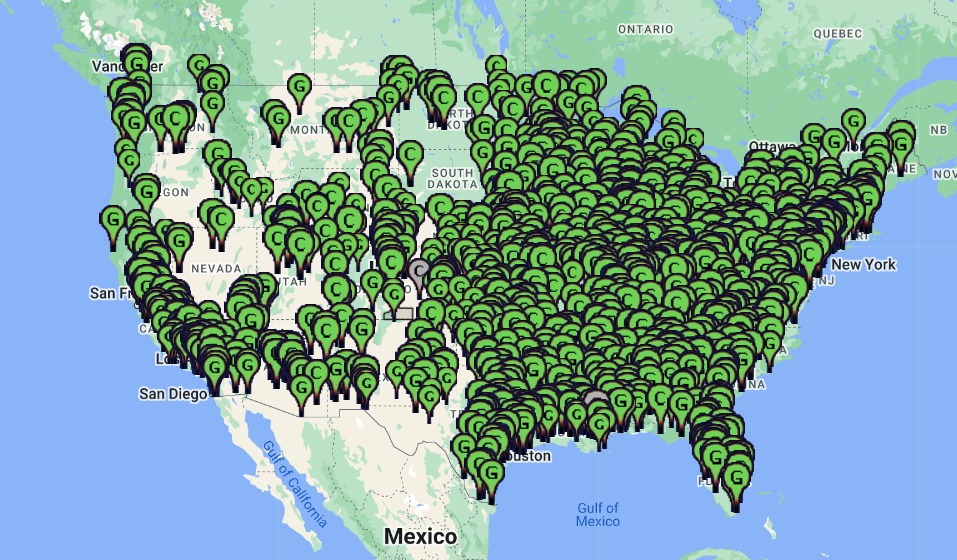| 2004 | William Howland |
| 6/17/2015 | Christopher Shorter |
| 1/28/2019 | Christopher Geldart |
| 1/28/2021 | Christine Davis |
| 1/21/2022 | Michael Carter |
| 1/3/2023 | Timothy Spriggs |
1972 to 1994: DC’s old trash incinerator operated in Benning Road neighborhood in Ward 7, a low-income Black community where other environmentally harmful facilities have been concentrated, one of the city’s two trash transfer stations (which had a fire in 2022 and is being rebuilt), an oil-fired power plant (closed in 2012) that left behind a contaminated site that is spreading underground into the neighborhood, and a Superfund toxic waste site near public housing where incinerator ash and other wastes were dumped years ago.
2004–2009: All 14 bids when landfills were allowed to compete for DC’s trash came in cheaper than using the Covanta Fairfax incinerator in Lorton, VA.
Covanta Fairfax is the largest industrial air polluter within at least 25 miles of DC. However, DPW kept signing contracts to use Covanta. Read background in our article on DC’s waste and environmental racism. Designed to burn up to 3,000 tons of waste per day, this incinerator was the 3rd largest in the nation. After being rebuilt in 2017 after a major fire, the incinerator now burns over their capacity, averaging 3,250 tons/day, more than the nation’s largest waste incinerator. In April 2024, Covanta rebranded itself as “Reworld.”
2013: DC DPW looks at building a new trash incinerator in the District. Opposition from Energy Justice Network, Sierra Club, and others kills that idea early.
During that exploration, then DPW Director Howland (who used to work for Fairfax County), had expressed that DC shouldn’t be giving money to dispose of waste at Covanta Fairfax if the city can own its own incinerator within its borders, and get money from importing waste from outside of the District. It became clear that the only feasible site being considered was to reuse the Benning Road site, which made it an environmental justice issue.
3/18/2013: Councilmember Mary Cheh chaired the Committee on Transportation and the Environment’s Public Oversight Hearing on the “Study of a Waste-to-Energy Facility in the District.” See video.
In that hearing, the spokesperson for the incinerator industry’s trade association admitted on the record that Mike Ewall from Energy Justice Network was correct about incineration generally being more expensive than landfilling [at 1:44 in video] and incineration being dirtier than coal power plants [1:46]. Cheh remarked [2:04] “…there’s going to be a substantial investment… not to mention the political issue about where such a facility would be located in the District. I’ve already decided it won’t be in Ward 3. Kidding.” While she claimed to be joking, it’s clear that the city’s wealthiest and whitest ward would never be chosen for a new incinerator. In two years, on behalf of the administration, Cheh introduced the bill to enter into the contract to keep burning DC’s trash in the community of color in Lorton, VA for another 6–11 years, though she later came to object to this contract (more below).
2015: DC DPW put together a request for proposals (RFP) that did not allow landfills to compete. The only facilities permitted to bid on taking DC’s trash were waste incinerators within 50 miles of DC’s two transfer stations. There are four of them, and the only one in a white community is in Montgomery County and DPW knew well that they do not accept out-of-county waste. It was a violation of Title VI of the Civil Rights Act to rig the RFP so that the only facilities eligible to accept DC’s trash are incinerators in communities of color. The incinerators in Alexandria and Baltimore didn’t have the extra capacity, so Covanta Fairfax was the only bidder and got the contract, as the RFP was designed to do. It was a 5-year contract with two 3-year renewal options. 21 groups opposed the contract, but it was approved, anyway. More on our opposition at the time here: https://energyjustice.net/dc/wastecontract
Hallie Clemm served as DPW’s Solid Waste Management Deputy Administrator for over 30 years from July 1985 through October 2015. She was in charge of designing the rigged contract and had the experience to know exactly what the result would be of the criteria she put in the RFP. Her role at DPW was highly controversial among environmental groups at the time, due to her pro-incineration views, and her hostility to zero waste efforts. She was credited for the long history of poor recycling rates in the District. After retiring from DPW, she went to work as the Chief Operating Officer for the city’s largest private waste hauler, Tenleytown Trash.
 2017: Two months after a major waste pile fire at the Covanta-run incinerator in Montgomery County, MD which burned for nearly two weeks, the same happened at Covanta Fairfax, causing much more damage. Three stories of trash burned uncontrolled for nearly two weeks and caused about $40 million in damage to the plant, shutting it down from 2/2/2017 until the very end of the year. Find some pictures of that here.
2017: Two months after a major waste pile fire at the Covanta-run incinerator in Montgomery County, MD which burned for nearly two weeks, the same happened at Covanta Fairfax, causing much more damage. Three stories of trash burned uncontrolled for nearly two weeks and caused about $40 million in damage to the plant, shutting it down from 2/2/2017 until the very end of the year. Find some pictures of that here.
2017: We commissioned published economist and life cycle assessment (LCA) expert, Dr. Jeffrey Morris, to use his “MEBCalc” model to analyze incineration vs. landfilling for DC. The Measuring Environmental Benefits Calculator (MEBCalc) evaluates nine different health and environmental impacts and is able to add them up using a monetized impact total to show all of the impacts on one chart. It’s the most comprehensive LCA tool for evaluating waste systems. The model showed incineration at Covanta to be far worse than landfilling when looking at the nine health and environmental criteria, including transportation impacts. Mike Ewall presented this to DPW Director Shorter and the DPW’s Office of Waste Diversion staff that summer. In gathering data for this, Mike spoke to landfill managers at four southeastern VA landfills to get landfill gas capture rate data, and asked them all if they thought they could beat Covanta’s price if they were offered a contract with the same 5–11 year term, despite the greater hauling distance. All indicated that they could. Here are the results of the life cycle assessment:

[Note: a more detailed 2021 report on the Covanta incinerator in Maryland, done for County Executive of Montgomery County, using updated methodology and more helpful summary charts, found that incineration is twice as harmful for the climate as landfilling at more distant landfills in PA, and was 3.2 times as bad when factoring in other health and environmental criteria. That can be found at https://energyjustice.net/md/moco]
2018: In the wake of the incinerator closure in 2017, and arguments between DC and Covanta on who will pay for the diversion of waste to Southeastern VA landfills during those 11 months, City Council Environment and Transportation Committee Chair, Mary Cheh, in DPW oversight hearings, asked DPW to do an analysis of incineration vs. landfilling (not realizing we had just done that). DPW promised to do so, and also committed to issue a Request for Information into the prices of going direct to landfill. DPW never did the latter and took until 2021 to do the analysis.2020: With the 5-year initial term of the Covanta contract coming up soon, Councilmember Cheh writes this powerful letter to DPW objecting to renewing it for more than one year while DPW does the two things they committed to in 2018.
2021: DPW reveals that they’re finally going to work on the landfill vs. incineration analysis, wouldn’t reveal who they consulted to design the scope of work, or the scope of work itself, and didn’t communicate the availability for the RFP so that experts like Dr. Morris with Sound Resource Management Group could even bid. They ended up putting together a scope of work that was biased in favor of incineration, using a biased model (EPA’s WARM model which looks only at climate impacts of waste systems) and hired a biased consultant, CDM Smith, which helps build incinerators, but decommission landfills (and has a flame in their logo!). We reviewed the study design once it was revealed, and before the study was started, we wrote up the concerned in this letter. EPA’s WARM model was a central point in these concerns. Councilmember Cheh backed up these concerns in her own letter to DPW. The main biases in the WARM model revolve around incorrect assumptions about displacement of electricity, and outdated science that assumes that “biogenic” carbon (CO2) emissions do not count, which has long been disputed by climate scientists.
In response, Mike Ewall met with DPW and six CDM Smith consultants. This meeting resulted in no concessions on the energy displacement assumption, even though Covanta Fairfax sells into the only RPS market in the nation (Maryland) where incineration is in a Tier 1 category, mainly competing with wind power and not displacing fossil fuels. They compromised partially on the biogenic carbon point, but only in a small way, to not give discounts to more durable biogenic carbon like wood, but they still ignored the “short-term” biogenic carbon emissions from incineration, which is most of the biogenic emissions, since food scraps and yard waste make up more of the waste stream than paper and wood.
2/23/2022: EPA admits to us that, despite having 15 versions of their WARM model out, it had never been peer reviewed. A peer review has since been conducted in response to our request and a public comment period waste opened in late 2023 / early 2024 where Energy Justice Network and our members and allies around the country gave extensive comments on the three major flaws with the model.
2022: the CDM Smith study comes out and is far worse than we anticipated, even claiming that incineration is cheaper (with no evidence and no RFP or RFI issued) and that landfilling in a rural white community is more of an environmental justice concern than incinerating and landfilling ash in a populated suburban community of color. They rigged this result by giving equal weight to communities that trucks travel through, even though their own report shows what we’ve found in our 2017 and 2021 LCAs… that transportation impacts are marginal compared to the landfill or incinerator impacts. CDM Smith found that transportation impacts are 1-4% of the total, but weighted them with 50% of the evaluation score in order to flip the obvious environmental justice conclusion on its head. (see Table 3-21 on page 3-28 [page 52 of the PDF]).
As overtly biased as this study was, it still proved our case (see Table 3-3 on page 3-3 [PDF page 27]) because in the scenario where the electricity displaced by Covanta Fairfax is 90% renewable, the greenhouse gas impacts of incineration turn out to be worse than those from landfilling, even with much greater trucking distance, and even with CDM Smith’s other biases still baked in. In fact, the energy they displace is 100% renewable because they sell into the Maryland Renewable Portfolio Standard program. If the study had used common metrics to compare other emissions impacts affecting health and environment instead of a risk assessment model, it would have shown a much more stark difference between incineration and landfilling, as incinerator emissions are far greater.
2022: We presented a DC Environmental Network (DCEN) Briefing on the Biased DC DPW Incineration Report: “Sustainability Assessment of Disposal Options,” debunking its claims.
In the wake of this study, DPW has chosen not to fulfill its promise to city council to get the pricing on direct landfilling, using the CDM Smith report as an excuse to not even find out.
10/4/2022: 274 organizations supported a letter we wrote to the White House Council on Environmental Quality urging them to lean on EPA to address numerous pro-incineration policies including the biases in their WARM model.
11/7/2022 In a Transportation & Environment Committee hearing on Zero Waste, DPW states that they’re moving away from incineration:
Councilmember Cheh: “I want to turn to probably back to you, director, the incinerator and recyclables contract. We approved a one-year extension for the waste to take us through the end of 2022, and I moved the legislation, I did it with some reservation as there’s a number of compelling objections to incineration, and to continue our conversation in particular. So, I’d like to know, now that this contract extension is coming to a close, what’s DPW’s plan to move forward?”
DPW Director Carter: “Our plan moving forward is to work to take as much of that waste to local landfills with incineration not being a viable alternative. I’m working with my staff and with procurement to see how we could expedite that process.”
See the video.
In a DPW stakeholder meeting shortly after this, Blake Adams (head of DPW’s Office of Waste Diversion) denies that they are aiming to move away from incineration. Both Director Carter and Blake Adams left their positions by early 2023 for different reasons.
Since Cheh’s 2020 letter, DC City Council has refused to move forward 3-year contract extensions with Covanta, and they’ve been on 1-year extensions so far.

